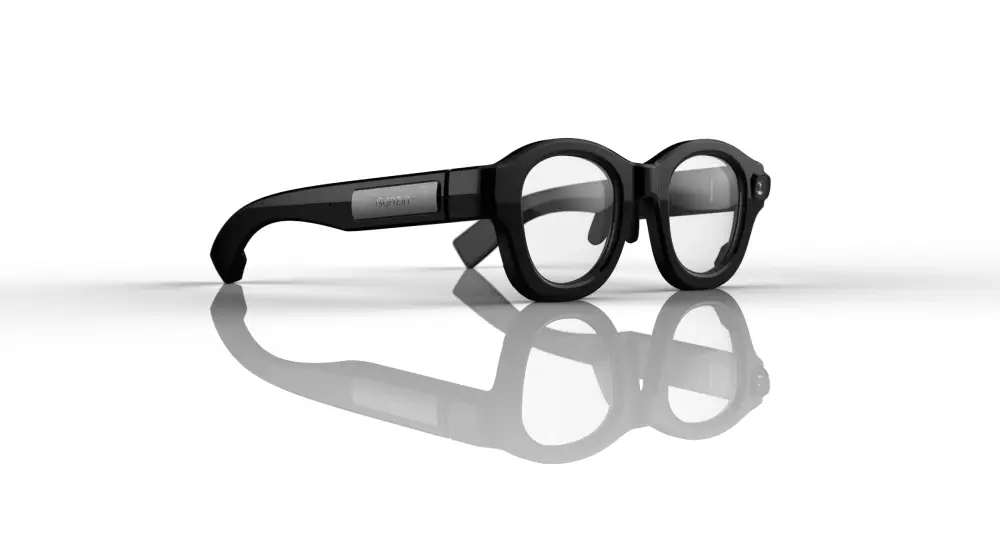![]()
In Augmented Reality News
July 14, 2025 — Ganzin Technology, a provider of wearable eye-tracking solutions, has recently announced the launch of its Gaze2AI Reference Design for high-precision 3D spatial gaze tracking.
Unveiled at AWE USA 2025 last month, Gaze2AI is built on the company’s AURORA IIS hardware and powered by its Aurora-II eye-tracking algorithm to enable gaze-driven interactions between humans and AI systems.
“Just as the 2D mouse transformed how we interact with computers, Ganzin’s 3D gaze technology is set to redefine how humans engage with AI. It is the key technology behind attention-based AI agent services,” said Dr. Shao-Yi Chien, CEO of Ganzin Technology.
According to Ganzin, the Gaze2AI Reference Design can track a user’s gaze across three dimensions, providing horizontal, vertical, and depth information. Gaze2AI interprets this spatial data to activate real-time AI interactions across platforms like Gemini, ChatGPT, Qwan and Microsoft Copilot.
This introduces what Ganzin calls a “3D Spatial Mouse,” creating a foundation for attention-based computing and enabling a range of AI applications that are hands-free and context-aware.
What Powers Ganzin’s Gaze2AI Eye-Tracking System?
At the heart of the system is AURORA IIS, a Neural Processing Unit (NPU)-based eye-tracking module that requires:
- One Neural Processing Unit (2.3 x 5.6 mm)
- Two compact IR eye sensors (1.6 x 1.6 x 2.3 mm)
- Two IR LEDs (1 x 0.5 x 0.45 mm)
According to Ganzin, the complete system weighs less than 1 gram and consumes under 100 mW of power, delivering real-time gaze data directly to the host with no processing burden. The company stated that this makes it suitable for AR/AI smartglasses, VR headsets, and mobile platforms.
How Ganzin’s SOL Glasses Connect Eye Tracking to Generative AI
Ganzin’s showcase at AWE involved a live demo of its SOL-to-GenAI prototype, which featured the company’s SOL Eye-Tracking Glasses connected to a smartphone via USB-C and running the Aurora-II algorithm. The system captured gaze and visual context information, which was then streamed wirelessly to a PC for real-time GenAI responses.

The glasses included:
- Two inward-facing IR cameras and illuminators for precision gaze tracking
- A 1.3K x 1.2K world-facing color camera for visual context capture
How AR Developers Can Use Ganzin’s Customizable Eye-Tracking Glasses
For developers, Ganzin stated that it offers a fully-customizable Design Kit with SOL Eye-Tracking Glasses that supports a range of applications, including gaming, healthcare, education, defense, and smart manufacturing. Developers can also adapt the camera placement and form factor of the glasses to meet unique industrial design needs.
For more information on Ganzin and its eye tracking solutions, please visit the company’s website.
Image credit: Ganzin
About the author
Sam is the Founder and Managing Editor of Auganix, where he has spent years immersed in the XR ecosystem, tracking its evolution from early prototypes to the technologies shaping the future of human experience. While primarily covering the latest AR and VR news, his interests extend to the wider world of human augmentation, from AI and robotics to haptics, wearables, and brain–computer interfaces.
